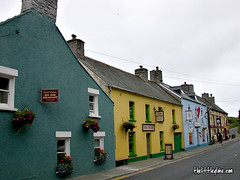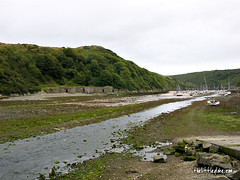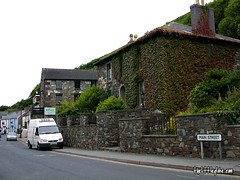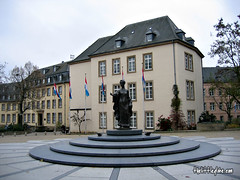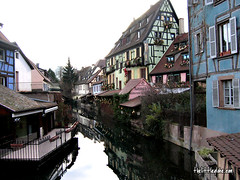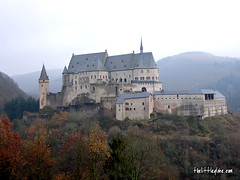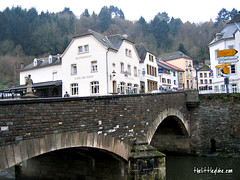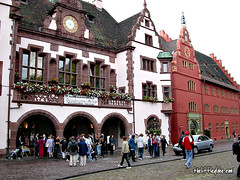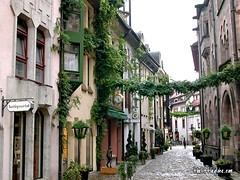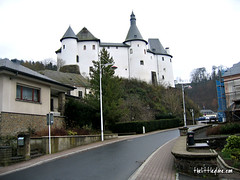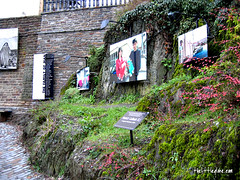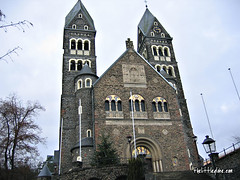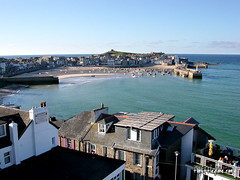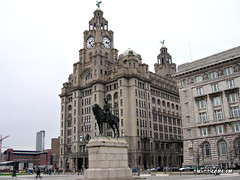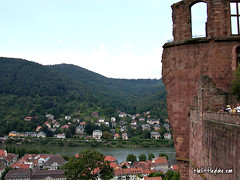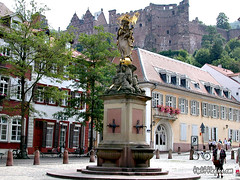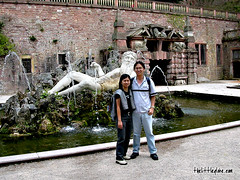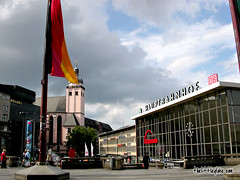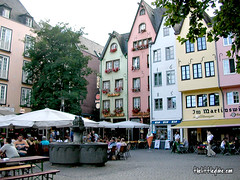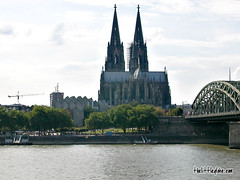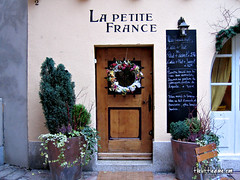 From Colmar to Strasbourg, we continued our travel in the Alsace region of France. The Germanic name “Strasbourg” means “the city of roads”. Due to its location just west of the French-German border, Strasbourg captures the cultures of both sides.
From Colmar to Strasbourg, we continued our travel in the Alsace region of France. The Germanic name “Strasbourg” means “the city of roads”. Due to its location just west of the French-German border, Strasbourg captures the cultures of both sides.The old city (Altstadt) centre of Strasbourg was built on the island formed by the two branches of the river Ill. We started out visit at Ponts Couverts (covered bridges linked by medieval watchtowers) in the Little France (La Petite France).
The Little France is a picturesque and romantic quarter that features narrow streets, the banks of the Ill and timber-framed houses reflected
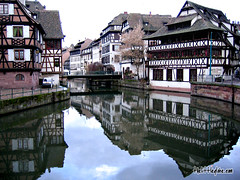 in the canal. It’s one of the best conserved quarters in Old Strasbourg. The quarter was once the home of fishermen, tanners and millers; now it’s filled up with tourist restaurants, hotels and souvenir shops. We then walked from Rue des Moulins to Pont Saint-Martin to get a nice view of the dam and the canal.
in the canal. It’s one of the best conserved quarters in Old Strasbourg. The quarter was once the home of fishermen, tanners and millers; now it’s filled up with tourist restaurants, hotels and souvenir shops. We then walked from Rue des Moulins to Pont Saint-Martin to get a nice view of the dam and the canal.The Gutenberg Square (Place Gutenberg) was next; the square was named
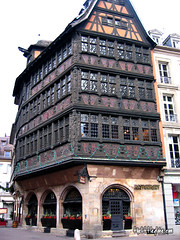 after the resident of the city who invented moveable-type printing press and then printed the first bible. A statue of him is in the middle of the square.
after the resident of the city who invented moveable-type printing press and then printed the first bible. A statue of him is in the middle of the square.Just a block away, there is the famous Cathedral Square (Place de la Cathédrale) of Strasbourg which boasts typical half-timbered houses which many are now hotels, restaurants and souvenir shops. There are two notable ones, Maison Kammerzell and Pharmacie du Cerf. The former has a highly elaborate carved façade dating back to the 15th and 16th centuries. Once a rich merchant’s mansion, it’s now a popular restaurant. The latter, situated at the beginning of the Rue Mercière is believed to be the oldest pharmacy in France (13th century).
The Notre Dame Cathedral of
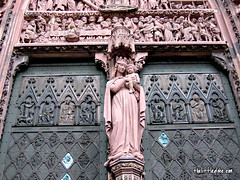 Strasbourg in the centre of the square was built over a span of three centuries (late 12th to 15th century). This magnificent red Vosges sandstone building is a masterpiece of gothic architecture.
Strasbourg in the centre of the square was built over a span of three centuries (late 12th to 15th century). This magnificent red Vosges sandstone building is a masterpiece of gothic architecture.With its central location, Strasbourg is often known as the “the cross-roads of Europe”, a destination with cultural and political importance. Next stop - Baden-Baden in Germany.
